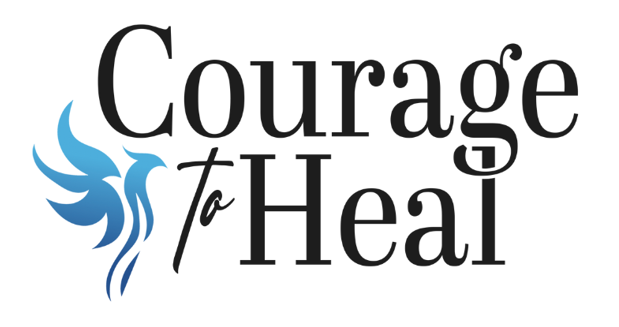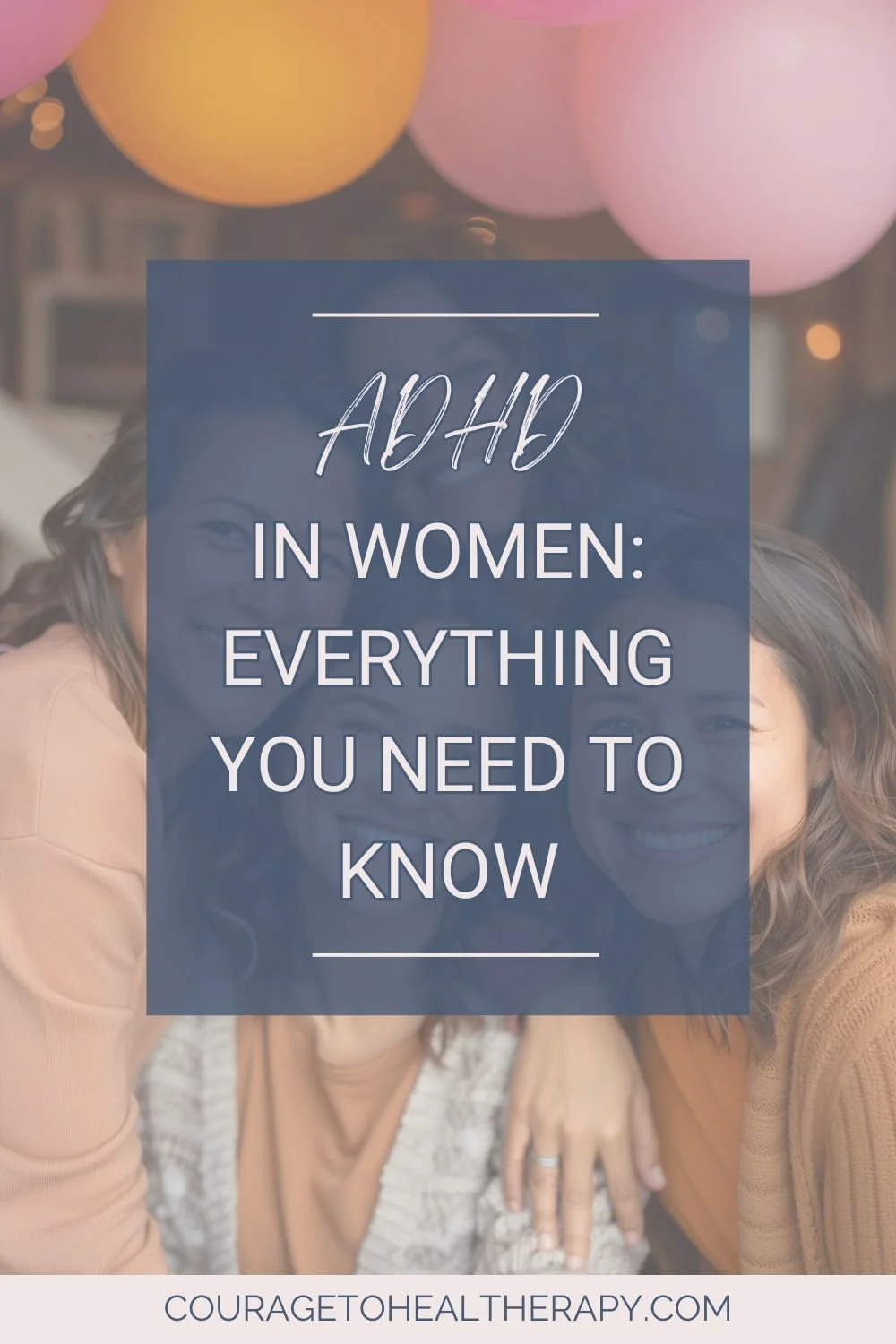ADHD In Women: Everything You Need To Know
Table of Contents Show
Let’s be real – there’s a quiet pressure that follows many women and AFAB folks through life. Be organized. Be kind. Be agreeable. And if you can’t? Well…try harder.
But for women with ADHD, those unspoken rules can feel like an impossible standard. You might find yourself wondering why certain things – like remembering appointments or thinking before speaking – seem so effortless for others and so tangled for you. It’s not that you don’t care. It’s that your brain works differently. And that difference is often misunderstood.
You see, ADHD in women is complicated.
Many women with ADHD have learned to camouflage their symptoms, masking the chaos beneath a polished exterior. Not because they want to hide – but because being “too much” or “not enough” can carry real consequences. Misdiagnosis. Shame. Deep, aching loneliness.
If any of that feels familiar, you’re not alone.
In this article, we’ll gently explore:
Why ADHD in women often goes undiagnosed – and what that silence costs
How symptoms might show up in your everyday life (and why they may not look the way you expect)
What compassionate, personalized care can actually look like
Understanding ADHD in women isn’t just validating – it’s liberating. It helps make sense of your story. It offers language for what you’ve been carrying. And maybe, just maybe, it opens the door to healing that feels like yours.
A note: When we say “women,” we mean all who were assigned female at birth, including trans men and some non-binary folks. You’re included here because of the way you socialized and the hormones you live/used to live with.
Signs & Symptoms of ADHD In Women
ADHD doesn’t always look like bouncing off the walls or blurting things out in class. Especially not in women or AFAB folks.
In fact, many women with ADHD don’t get diagnosed until adulthood – sometimes after years of internalizing the idea that they’re just “spacey,” “lazy,” or “too sensitive.” The truth? Their ADHD has just been wearing a quieter costume.
There are three main types of ADHD: hyperactive, inattentive, and combined. And while boys are more often identified with the hyperactive type (the kind that’s hard to ignore in a classroom), women are far more likely to experience inattentive symptoms – the kind that can hide in plain sight.
Here’s what inattentive ADHD in women can actually feel like day to day:
You read the same paragraph three times and still don’t know what it said.
You lose track of time – even when you’re trying really hard not to.
You start a project with full intention… and then remember it two weeks later, half-finished and buried under laundry.
Your brain feels like 17 tabs are open at once, and someone just keeps switching the music.
Appointments, deadlines, and small-but-important details? They slip through your fingers no matter how many reminder apps you set.
It’s not about effort. It’s about wiring. And for so many women, that wiring has gone unseen and unsupported for far too long.
This isn’t your fault. It’s just how ADHD shows up in many of us – and the good news is, understanding this is the first step toward care that actually fits.
ADHD In Women – Checklist
ADHD in women doesn’t always follow the textbook examples – and honestly, it rarely does. Instead, it often hides behind feelings that are harder to describe, but deeply felt.
According to recent research, here are some common ways it can show up:
Daydreaming – You drift. Not because you're bored or lazy, but because your brain pulls you elsewhere. Staying present? It’s like trying to catch smoke with your hands.
Forgetfulness – You care. You really do. But appointments, birthdays, even your own to-do list… they vanish. Sometimes minutes after you’ve written them down.
Low self-esteem – When everyday tasks feel harder than they “should,” it’s easy to start wondering if something’s wrong with you. (Spoiler: There’s not.)
Relationship struggles – Maybe you interrupt. Or over-explain. Or shut down because you’re overwhelmed. It’s not about not caring – it’s about trying to stay regulated in a world that moves too fast.
Emotional intensity – Your feelings come in big waves. Sometimes too big to hold in. You might cry “too easily” or feel everything all at once – and that can be exhausting.
Being called “too sensitive” – You’ve probably heard it more than once. And every time, it stings. Because you’re not too sensitive – you just feel things deeply.
Chronic stress – Life can feel like a high-stakes balancing act. One missed detail, one forgotten task, and everything feels like it could collapse.
Feeling inadequate – Even on your best days, that nagging feeling might still whisper, Why can’t I just get it together?
Regret or grief – There may be a quiet ache for all the things you didn’t do, or couldn’t finish, or forgot to start. Missed chances. Paths not taken.
Fear of losing control – Some days, it’s not just about managing tasks – it’s about managing yourself. Emotions, energy, impulses. It’s a lot.
Anger and irritability – That quick fuse? It’s not you being dramatic. It’s your nervous system waving a white flag, asking for relief.
If you see yourself in any of this, please know: you’re not making it up. And you’re not alone. ADHD isn’t a character flaw – it’s a brain difference. One that deserves understanding, not shame.
ADHD In Women vs Men
For a long time, ADHD was seen as something that mostly affected boys – the ones who couldn’t sit still, who blurted things out, who bounced around the classroom. That narrow view left many girls and women out of the conversation entirely. Undiagnosed. Misunderstood. Left wondering why they felt so different, yet couldn’t explain it.
But here’s the truth: ADHD doesn’t always look loud. Especially not in girls. Especially not in cultures where being “polite,” “quiet,” or “well-behaved” is expected.
While boys with ADHD are more likely to be seen as hyperactive or disruptive, girls are often labeled as spacey, forgetful, or overly sensitive. A girl might spend hours lost in daydreams, struggle to finish her homework, or get overwhelmed by social dynamics. And instead of concern, what she often receives is correction.
“You need to try harder.”
“Stop being so dramatic.”
“You just need to focus.”
The signs are subtle, but the impact runs deep.
Because these differences don’t always cause problems in the classroom – or at least, not the kind that get flagged – they often slip under the radar. And when they do get noticed? They're frequently chalked up to anxiety, depression, or being “scatterbrained.”
The emotional toll is real. Young girls with ADHD may be more vulnerable to bullying – whether in the school hallway, in friend groups, or silently, through screens. And as they grow into teenagers, many turn to coping mechanisms that numb the pain but deepen the struggle. Things like alcohol, cannabis, or risk-taking behaviors. Not out of recklessness, but out of a need to feel something different. To feel like they belong.
Recognizing ADHD in women means looking beyond the stereotypes. It means holding space for the quieter signs – and offering support before shame sets in. When we do that, we don’t just help them manage symptoms. We help them reclaim their story.
ADHD And Hormones In Women
If your ADHD symptoms seem to ebb and flow throughout the month – or shift dramatically during big life transitions like puberty, pregnancy, or menopause – you’re not imagining it. Hormones play a much bigger role in ADHD than most people realize.
Throughout a woman’s life, hormonal changes can amplify ADHD symptoms in ways that feel destabilizing and, frankly, confusing. During puberty or perimenopause, for instance, rising or falling estrogen levels can throw things off balance – making it harder to concentrate, regulate emotions, or manage day-to-day tasks. And unfortunately, many of these shifts get mistaken for something else: moodiness, depression, or just “being hormonal.”
The result? Misdiagnosis. Delayed care. And far too many women being told they’re overreacting, when in reality, their neurobiology is simply responding to real internal changes.
Here’s what we do know based on recent research:
During pregnancy, many women notice a calming of ADHD symptoms. This is thanks to a rise in estrogen, which supports the balance of key brain chemicals like dopamine. It’s not magic – it’s biology.
But as estrogen naturally declines – particularly during perimenopause and menopause – those same symptoms often come roaring back. Things like focus, memory, and emotional regulation can feel harder to access, even if you’ve been managing well for years.
These patterns aren’t talked about enough. Which means many women are left wondering why what used to work isn’t working anymore.
The truth is: we’re only beginning to understand the full impact of hormones on ADHD. But what we do know is this – it matters. And recognizing this connection can be a game-changer in finding care that actually honors your lived experience.
You deserve support that meets you where you are – not just in one chapter of life, but through all of them.
ADHD Masking In Women
If you’ve ever spent an entire day holding it together – smiling, nodding, over-preparing – only to come home and collapse in exhaustion, you already know what masking feels like.
Many women with ADHD become quiet experts at this. They learn to overcompensate. To stay “on top of things.” To look organized, calm, capable – even when it feels like everything inside is in chaos. These invisible strategies help them function, yes. But they also keep others from seeing what’s really going on underneath.
Because when you’re performing “fine,” no one thinks to ask what it’s costing you.
Masking can be a survival skill. But it’s also exhausting. And over time, it can blur the line between who you really are and who you think you need to be to feel accepted.
And then there are the quieter ways we cope – the ones that feel safer but not always sustainable. Maybe you avoid certain social situations because they’re just too overwhelming. Maybe you scroll for hours to shut off your brain. Maybe you’ve stopped asking for help because somewhere along the line, it felt like asking was too much.
None of this means you’re doing it wrong. It means you’ve been doing your best with what you had.
But here’s the thing: coping doesn’t always mean healing. And understanding your patterns – without shame – is one of the first, most compassionate steps toward finding support that actually fits. Support that feels like relief, not another mask to wear.
You don’t have to keep holding it all together alone. You really don’t.
Women With High-Functioning ADHD
Many girls with ADHD grow up to be wildly capable, creative, and successful women. They become doctors, lawyers, founders, artists, educators – deep thinkers with big hearts and endless potential. And yet… beneath the accomplishments, something often feels off.
Because when ADHD goes unrecognized or unsupported, even success can feel like a house of cards. One unexpected shift – one missed email, one forgotten meeting – and everything feels like it might come crashing down.
You might see yourself here:
Managing a heavy workload, but constantly battling imposter syndrome – like you’re just one slip-up away from being exposed.
Ordering takeout again, not because you don’t care about nutrition, but because the executive function it takes to plan, shop, and cook feels like too much.
Missing bill payments, not out of irresponsibility, but because your mind is juggling a thousand things – and sometimes the urgent drowns out the important.
From the outside, it can look like you’re thriving. But behind the scenes, it might feel like you’re barely hanging on. And that disconnect can be deeply lonely.
Burnout isn’t a failure. It’s a signal. It’s your nervous system saying, I can’t keep doing this without help.
The truth is, high-functioning doesn’t mean low-struggling. You can be brilliant and still need support. You can achieve big things and still feel lost in the small ones.
And you deserve care – not only when things fall apart, but even when they seem “fine.”
How Are Women Diagnosed With ADHD?
On paper, the process for diagnosing ADHD is the same for everyone. It typically involves a comprehensive clinical assessment, interviews, and a look at your history and daily functioning.
But in real life? For many women, the path to a diagnosis is anything but simple.
That’s because the current diagnostic criteria were largely developed around how ADHD tends to show up in boys – more external, more disruptive, more visible. Which means the quieter, more internal struggles that many women face often get missed. Or worse – misunderstood.
Here are just a few of the barriers women often encounter when seeking an ADHD diagnosis:
Diagnostic tools that overlook gendered patterns – Most checklists weren’t built with female-presenting experiences in mind.
Masked symptoms – Years of overcompensating can make signs of ADHD harder to spot from the outside.
Misdiagnosis – Many women are first (and sometimes wrongly) diagnosed with anxiety, depression, or even borderline personality disorder.
Poor mental health due to delayed support – When ADHD goes unrecognized, the emotional fallout can be heavy.
Internalized shame – A lifetime of feeling “too much” or “not enough” can lead women to blame themselves instead of seeking help.
That’s why it’s so important for clinicians to approach ADHD assessments with curiosity and care – and to understand how gender norms shape what symptoms get noticed and what gets dismissed.
A thorough, attuned diagnostic process doesn’t just check boxes. It looks beneath the surface. It asks deeper questions. It listens for what’s been hidden – not just what’s loud.
Because so many women have spent years trying to hold it together. A compassionate diagnosis isn’t just clarity – it’s a form of relief. Of being seen.
Why Is ADHD Less Diagnosed In Women?
For decades, ADHD was largely viewed through a male lens – loud, impulsive, disruptive. The kind of behavior that gets flagged early in classrooms. Because of this, the diagnostic criteria were built around how ADHD tends to present in boys. And that means many girls and women were simply missed.
Their symptoms didn’t “look right.” Or they were too quiet. Too compliant. Too good at hiding their struggles.
So it’s no surprise that today, many women arrive at their diagnosis after first recognizing themselves in someone else’s story – maybe a podcast, a TikTok, or a book. That moment of Wait… this sounds like me becomes the start of something powerful. A self-diagnosis that leads to seeking real answers.
But even then, the road can be bumpy.
Many women feel like they have to convince a doctor that their struggles are real. That they’re not being dramatic. That what they’re experiencing isn’t just stress or burnout. It’s ADHD. And it’s been there all along.
Without a diagnosis, it’s easy to internalize the wrong story. To grow up feeling lazy, scattered, or not good enough. To spend years wondering why basic tasks feel so hard when everyone else seems to manage just fine.
Getting a diagnosis isn’t a fix-all. But for many, it’s a turning point. A lightbulb moment that says: You’re not broken. Your brain just works differently.
It brings relief. Language. Context. Permission.
And after that? Many women begin to feel something they didn’t even know they were missing: compassion for themselves.
They start to see their symptoms not as personal failures, but as signals that deserve support. They stop fighting themselves and start building systems that actually work for their brain. They reclaim agency.
Because when you understand your brain, you can work with it – not against it.
ADHD In Women: Online Test
Right now, there isn’t a validated ADHD test designed specifically for adult women. And that matters – because most of the tools we do have were developed using data from boys or mixed-gender groups. Which means the more subtle, internalized symptoms that often show up in women? They can slip through the cracks.
That’s why working with an experienced clinician – someone who truly understands how ADHD presents across different genders – is so essential. A thorough assessment doesn’t just check boxes; it looks at your lived experience, your story, and the coping strategies you’ve developed over time.
Online self-tests can be a helpful starting point. They might spark recognition or give you language for things you’ve felt but couldn’t quite name. If you’d like to explore that, this free ADHD test may help you identify possible signs.
But if your results feel resonant – or even just raise questions – it’s important to take the next step. Because no quiz, no matter how insightful, can replace a thoughtful, trauma-informed evaluation from a professional who sees you.
Getting clarity about what’s going on in your brain isn’t about labels – it’s about understanding. And from there? It’s about finding the support you need to move forward, with less shame and more ease.
Tips For Women With ADHD
Living with ADHD as a woman – or as someone assigned female at birth – comes with its own set of challenges. But it also comes with wisdom, resilience, and a different way of seeing the world. These tips aren’t about “fixing” yourself. They’re about offering support that honors how your brain works, not how others expect it to.
Tip 1: Prioritize Your Mental Health
Anxiety. Mood swings. That relentless inner critic. Sound familiar?
Women with ADHD are significantly more likely to experience depression, low self-worth, and emotional overwhelm. And while these symptoms can show up in many ways, they’re often tangled up with the ADHD itself. Unfortunately, they’re also frequently misread – brushed off as "just stress" or mislabeled as something else entirely.
If your emotional ups and downs feel tied to focus, overstimulation, or chronic overwhelm, you might not be “just moody” – you might be navigating ADHD without the right support.
Working with a therapist who gets ADHD can be a game-changer. Someone who sees past the surface and helps you make sense of what’s underneath. With the right kind of care, you can learn to manage your stress, regulate your emotions, and show up for yourself with more self-compassion.
Because your mental health matters. And you deserve support that sees the whole you.
Tip 2: Pay Attention to Hormonal Shifts
Hormones are part of the story – and for many women, they’re a huge part.
Puberty. Menstrual cycles. Pregnancy. Postpartum. Perimenopause. Each of these stages can shift ADHD symptoms in ways that feel disorienting or overwhelming. You’re not being dramatic. You’re not losing your grip. Your body is changing – and your brain is responding.
Some women find that ADHD medications work differently depending on where they are in their cycle. Others notice their symptoms intensify during hormonal transitions, like menopause. While routine med adjustments based on hormones aren’t standard (yet), many women benefit from tracking patterns and bringing them into conversations with their doctor.
The key here? Be gentle with yourself. Rest when you need to. Let others in. And find a provider who understands the whole picture – because you shouldn’t have to choose between understanding your hormones and honoring your ADHD.
Tip 3: Honor Your Identity
Here’s something that doesn’t get said enough: You are not a failed version of a “normal” person. You are not broken. You’re a woman living in a world that wasn’t built for your brain – and you’ve been doing the best you can.
For many women, ADHD chips away at confidence over time. There’s this constant feeling of not measuring up. But underneath the shame and the self-doubt is something powerful: a unique way of thinking, feeling, and creating that the world needs.
Therapy, coaching, or even just the right community can help you reconnect with who you really are – not who you’ve been told you should be. ADHD is part of your story, yes. But so are your strengths. Your sensitivity. Your adaptability. Your grit.
You don’t have to hide. You get to take up space. All of it.
Tip 4: Ask for What You Need at Work
Let’s be real – workplaces aren’t exactly designed with neurodivergent brains in mind.
Between overflowing inboxes, back-to-back meetings, and constant stimulation, it’s easy to feel like you’re barely keeping up. Add in ADHD symptoms like forgetfulness, disorganization, or difficulty with focus – and suddenly, the job gets a lot harder. Not because you’re not capable. But because the system wasn’t built for you.
That’s why asking for support isn’t a weakness – it’s advocacy.
Whether it’s a flexible schedule, written instructions, fewer distractions, or access to ADHD-friendly tools, reasonable accommodations can help. Group-based programs can also offer a sense of community and shared strategies, while one-on-one coaching provides a more tailored approach.
Support at work shouldn’t be a luxury – it should be part of what makes you thrive.
Autism And ADHD In Women
ADHD and autism often go hand in hand – more often than people realize. Research suggests that between 50–70% of autistic individuals also have ADHD, and 20–50% of those with ADHD are also autistic. When both conditions are present, it’s sometimes referred to as AuDHD.
But here’s where it gets complicated: most of what we know about ADHD and autism comes from research done on boys and men. That means the way these conditions show up in women – or anyone socialized as female – often gets misunderstood, misdiagnosed, or missed altogether.
Just like with ADHD, many autistic women become masters of masking. They learn to mirror others, script conversations, and bury their overwhelm under perfectionism or people-pleasing. It “works” – until it doesn’t. And by then, they’re often burned out, anxious, or quietly unraveling, without ever being told why.
This isn’t just a clinical oversight – it’s a public health issue. A late or missed diagnosis can shape everything: your self-worth, your access to care, your ability to feel understood in your own life.
Support For Women With ADHD
ADHD in women often wears a different face – quieter, more internal, easier to overlook. But that doesn’t make it any less real. And it definitely doesn’t make you any less worthy of support.
Understanding how ADHD shows up in women is a powerful first step. It’s the moment things start to click. The moment shame begins to soften, and clarity starts to take its place.
Navigating ADHD Medication
Choosing to explore medication for ADHD is a deeply personal decision. For many women, it's not just about managing symptoms—it's about reclaiming clarity, focus, and a sense of self that's often been clouded by years of misunderstanding.
Understanding Your Options
ADHD medications primarily fall into two categories:
Stimulants:
These are often the first line of treatment and include medications like:
Methylphenidate-based: Ritalin, Concerta, Focalin
Amphetamine-based: Adderall, Vyvanse, Dexedrine
Stimulants work by increasing dopamine and norepinephrine levels in the brain, enhancing concentration and reducing impulsivity. They can be fast-acting, but it's important to monitor for side effects like sleep disturbances or increased anxiety.
Non-Stimulants:
For those who don't respond well to stimulants or prefer alternatives, options include:
Atomoxetine (Strattera): A selective norepinephrine reuptake inhibitor, often chosen for its non-stimulant properties.
Guanfacine (Intuniv) and Clonidine (Kapvay): Originally developed for blood pressure, these can help with impulsivity and hyperactivity.
Viloxazine (Qelbree): A newer non-stimulant option approved for both children and adults.
Non-stimulants may take longer to show effects but can be beneficial, especially for those with co-existing conditions like anxiety.
Special Considerations for Women
Hormonal fluctuations throughout the menstrual cycle, pregnancy, and menopause can influence how ADHD symptoms manifest and how medications work. Some women notice changes in symptom severity or medication effectiveness during these times. It's crucial to work closely with a healthcare provider who understands these nuances to adjust treatment plans accordingly.
Finding the Right Fit
Medication isn't a one-size-fits-all solution. It often requires patience and open communication with your healthcare provider to find the right type and dosage. We recommend finding a great psychiatrist to help manage ADHD medication if this is the route you are taking.
Remember, seeking help is a strength, and you deserve support that acknowledges and respects your unique journey.
Supporting Your ADHD Naturally
Medication and therapy are powerful tools – but they’re not the only ones. Many women find that layering in natural, body-based practices can help regulate mood, improve focus, and reduce overwhelm. Here are a few supportive strategies to consider:
Move Your Body, Calm Your Mind
Regular movement – especially aerobic exercise like walking, swimming, or dancing – can boost dopamine and norepinephrine levels, improving attention and executive function. Even short bursts of activity can offer immediate benefits, such as increased motivation and reduced fatigue.
Yoga and tai chi are particularly helpful for ADHD. These practices combine movement with breath and mindfulness, which can enhance emotional regulation and focus.
Breathe Into Focus
Breathwork practices, such as alternate nostril breathing or simple deep breathing exercises, can activate the parasympathetic nervous system, promoting a sense of calm and reducing impulsivity. Incorporating breathwork into your daily routine can be a grounding tool for managing ADHD symptoms.
Mindfulness and Meditation
Mindfulness meditation can help increase awareness of thought patterns and improve attention span. While traditional meditation might be challenging, especially for those with ADHD, practices that incorporate movement or guided sessions can be more accessible and effective.
Nutritional Support
Certain supplements may support brain health and alleviate some ADHD symptoms:
Omega-3 fatty acids: Found in fish oil, these may help improve attention and cognitive function.
Magnesium: Supports neurotransmitter function and may help with hyperactivity and irritability.
Zinc: Plays a role in neurotransmitter metabolism and may benefit those with low levels.
Iron: Essential for dopamine production; low levels can exacerbate ADHD symptoms.
Vitamin B6: Involved in neurotransmitter synthesis, potentially aiding in symptom management.
Always consult with a healthcare provider before starting any new supplement regimen.
Herbal Remedies
Some herbal supplements have shown promise in supporting ADHD symptoms:
Ashwagandha: An adaptogen that may help reduce stress and improve focus.
Ginkgo biloba: May enhance cognitive function and attention.
Bacopa monnieri: Traditionally used to improve memory and cognitive performance.
Rhodiola rosea: May help with fatigue and stress resilience.
It's important to discuss herbal supplements with a healthcare provider, as they can interact with medications and aren't suitable for everyone.
Prioritize Sleep
Sleep challenges are common with ADHD, and poor sleep can exacerbate symptoms. Establishing a consistent bedtime routine, reducing screen time before bed, and creating a restful sleep environment can make a significant difference. Some find that melatonin supplements help regulate sleep cycles, but it's best to consult with a healthcare provider before starting any new supplement.
Remember, managing ADHD is a personal journey, and what works for one person may not work for another. It's about finding the right combination of strategies that support your unique needs and lifestyle. You're not alone, and with the right tools and support, you can navigate ADHD with confidence and compassion.
How We Can Help
At Courage to Heal Therapy, we specialize in working with women and AFAB folks who are navigating the layered, often hidden realities of ADHD. We don’t just look at symptoms – we listen to your story. We recognize the years you may have spent masking, compensating, or feeling like you were just barely holding it together.
If you’re ready to feel more supported, more understood, and more at home in your own mind – we’re here for you.
We offer free online consultations to help you explore whether Anna Khandrueva might be the right ADHD therapist for you. No pressure, no overwhelm – just a safe place to start the conversation.
Schedule your free consultation today, and take one gentle step toward the support you’ve been needing all along.







